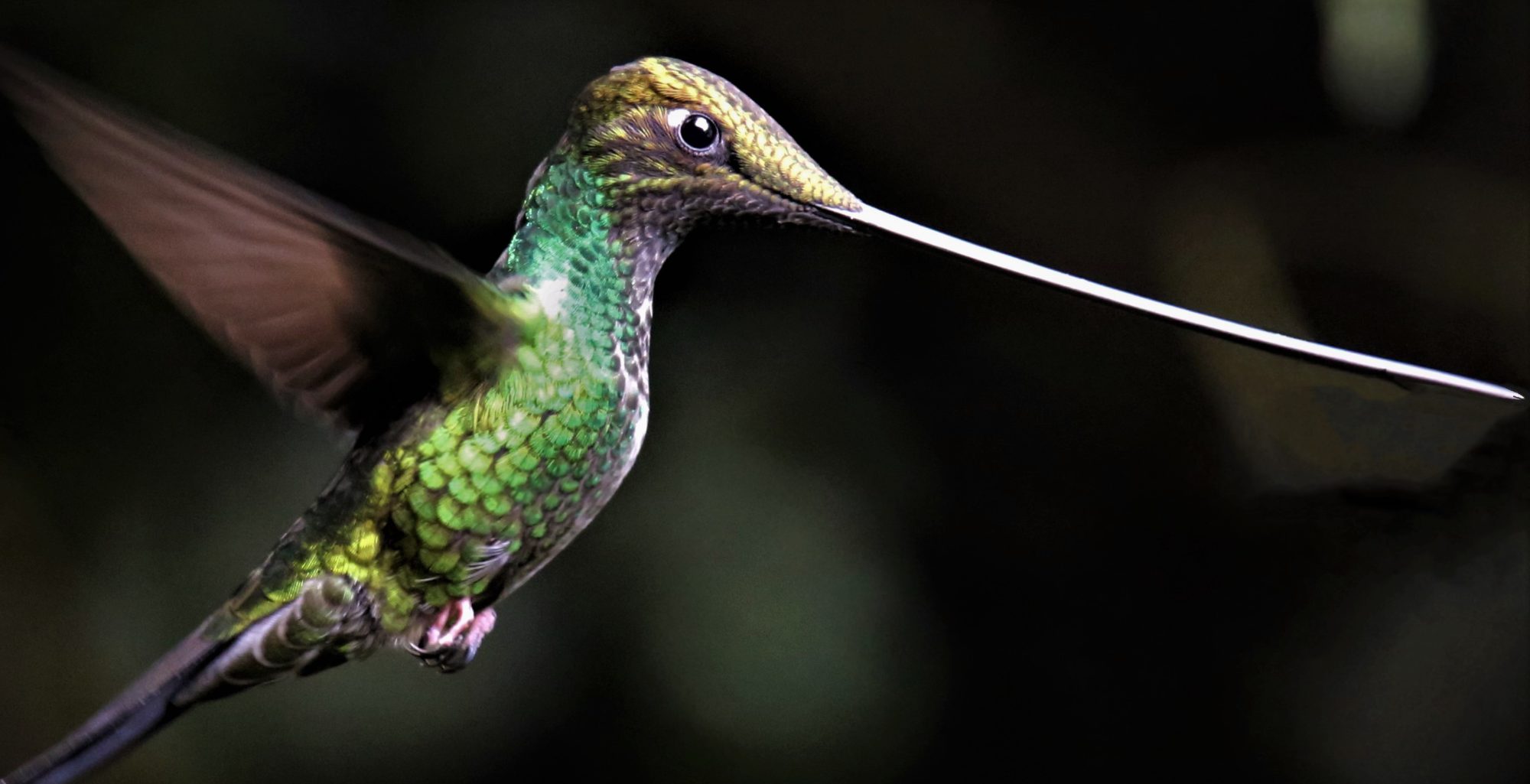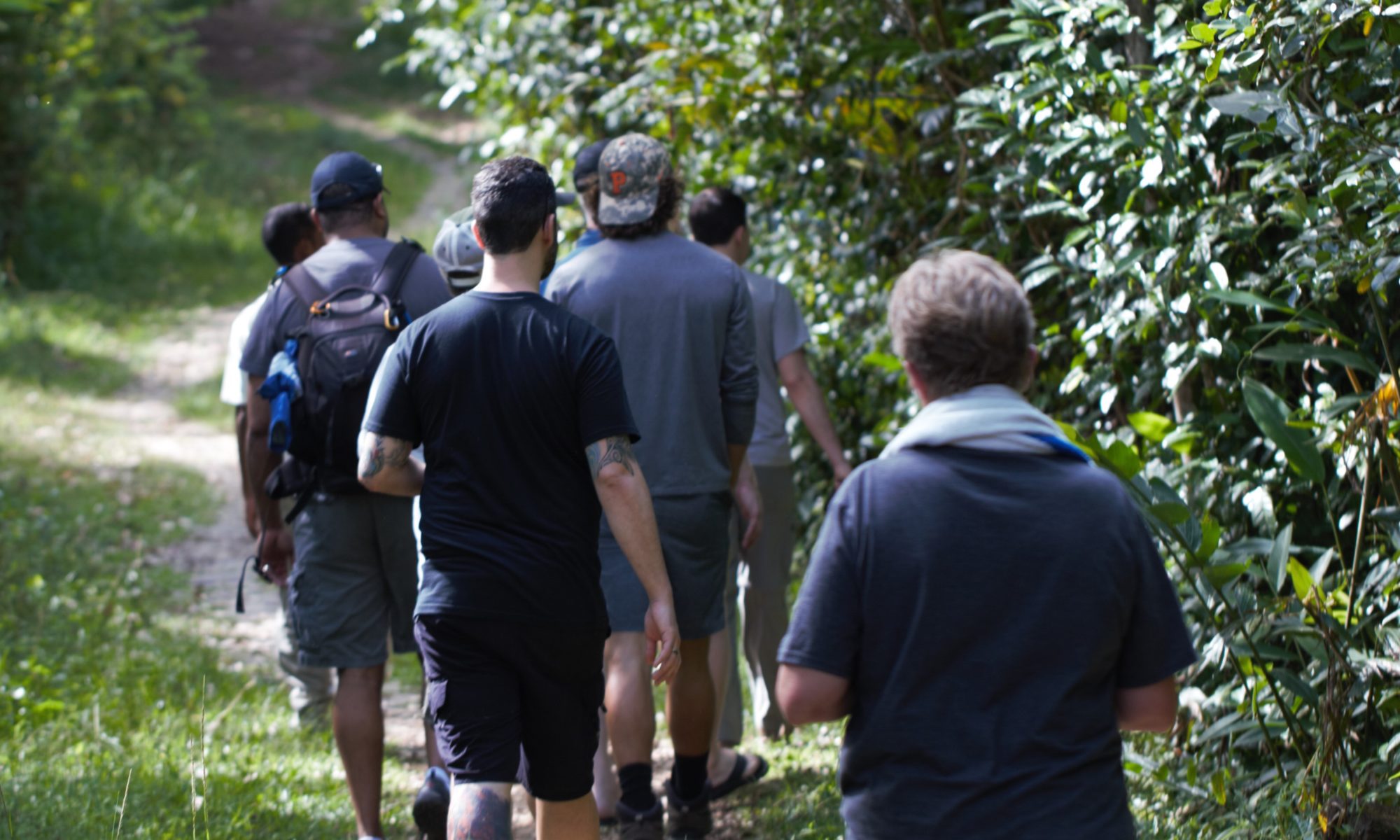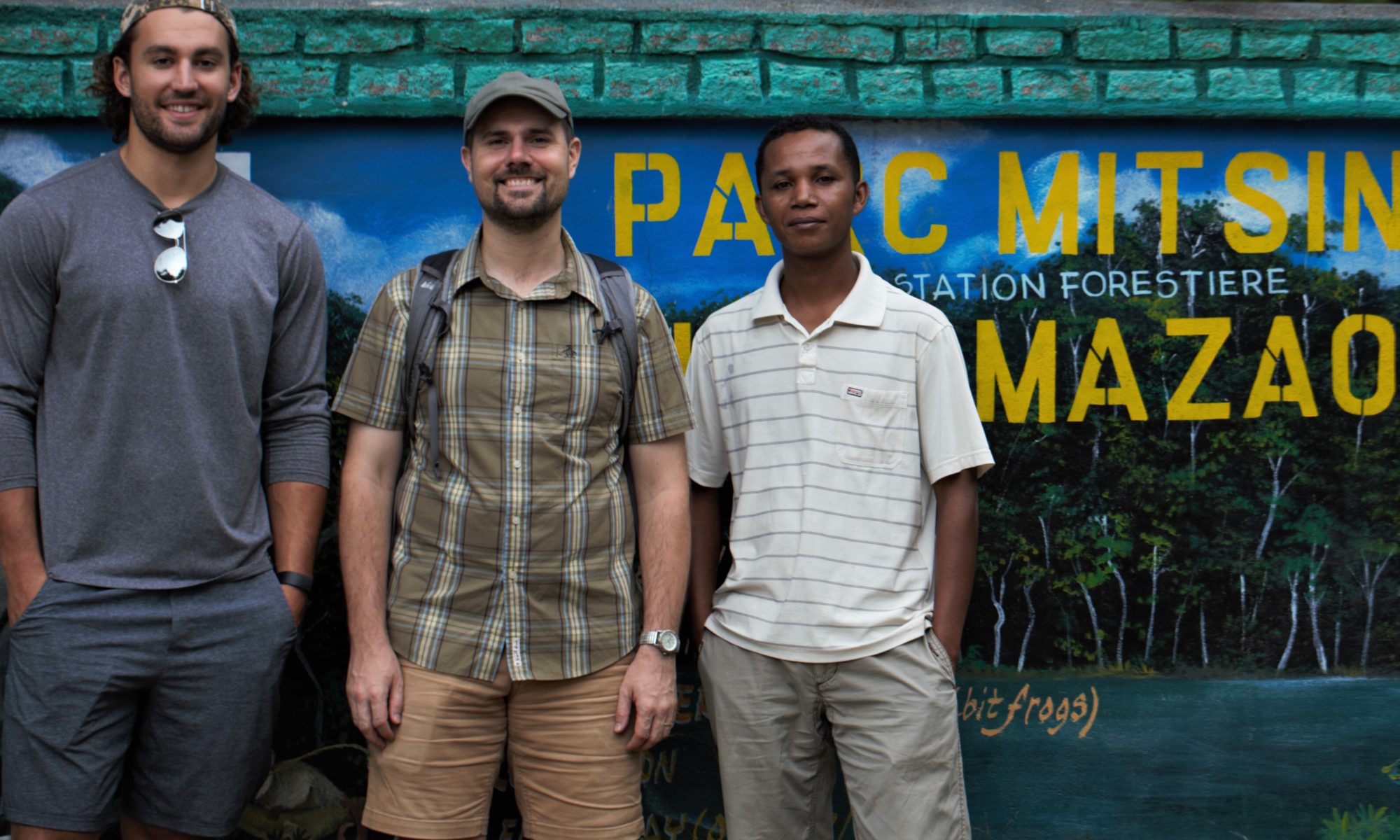Our local guide who lives near the site of a rare and interesting little frog that scientists call Mantella cowani said we would have to get up early to hike to the location where it could be found. We had to eat breakfast and be ready to go by 4 a.m. It was still dark when we set off in the direction of a granite mountain top we had seen the day before near the place where the van had a flat. We could not see it then but our guide knew the way. By the time it got to be light enough to turn off our headlamps we could see three granite round peaks. Of course, the one we were going to was the farthest away. I had already taken a misstep trying to cross an irrigation channel and wound up with one leg knee-deep in the mud of a rice paddy.
The hike was strenuous, but the trail was pretty well established. It passed by a small Catholic church with a school consisting of a few white buildings. It was closed today, but our guide said it was still a functioning institution. Our group was pretty spread out by the time we got to a fork in the trail. Because our guide was a frail-looking man, who looked older than me, I did my best to keep up. Honestly, it was not as hard as the Vohimana hike, and I was starting to get in shape. Devin, who had never been to this site, was staying in the sweeper position, making sure no one was left behind. The fork we took was the smaller path, which quickly put us out of sight of the main path. The people lagging behind remained on the main path and began wandered the hills. Eventually they ran into a local person approaching from the opposite direction and asked if he had seen any foreigners. He said no, so they began backtracking. It wasn’t until about an hour later that we saw them preparing to cross the stream. I felt bad, because as soon as we crossed the stream, we started seeing cool stuff in this unusual habitat, and it never dawned on me that everyone was not there.
Back to the frogs . . . Cowani, as we call it, is a critically endangered frog that probably never was very common and has not done well in captivity. It is a bold little frog that seems at home on the dark large exposed granite. The rock stays wet, it seems, at least at this time of the year, as there is a ribbon of water that runs down the face. Where the water comes from is hard to imagine as it is the highest point around and it wasn’t raining. The rock was covered with white lichen and the frogs seemed to be searching through the folds of the lichen looking for the tiniest of bugs. Occasionally, you would see small flying termites get stuck to the moisture and quickly get gobbled up. The abundance of food made for some healthy looking little frogs. The better photographers must have gotten some great photographs as the lighting was ideal. I hope they will share. I mostly took pictures of people and scenery.
The frogs were not the only things worthy of photographs. It was a unique habitat filled with orchids, sundews and other plants I had never seen. Even our plant experts in the group were amazed at the number of species they had never seen. And Mike took the opportunity to fly the drone again. I got some interesting photos.









